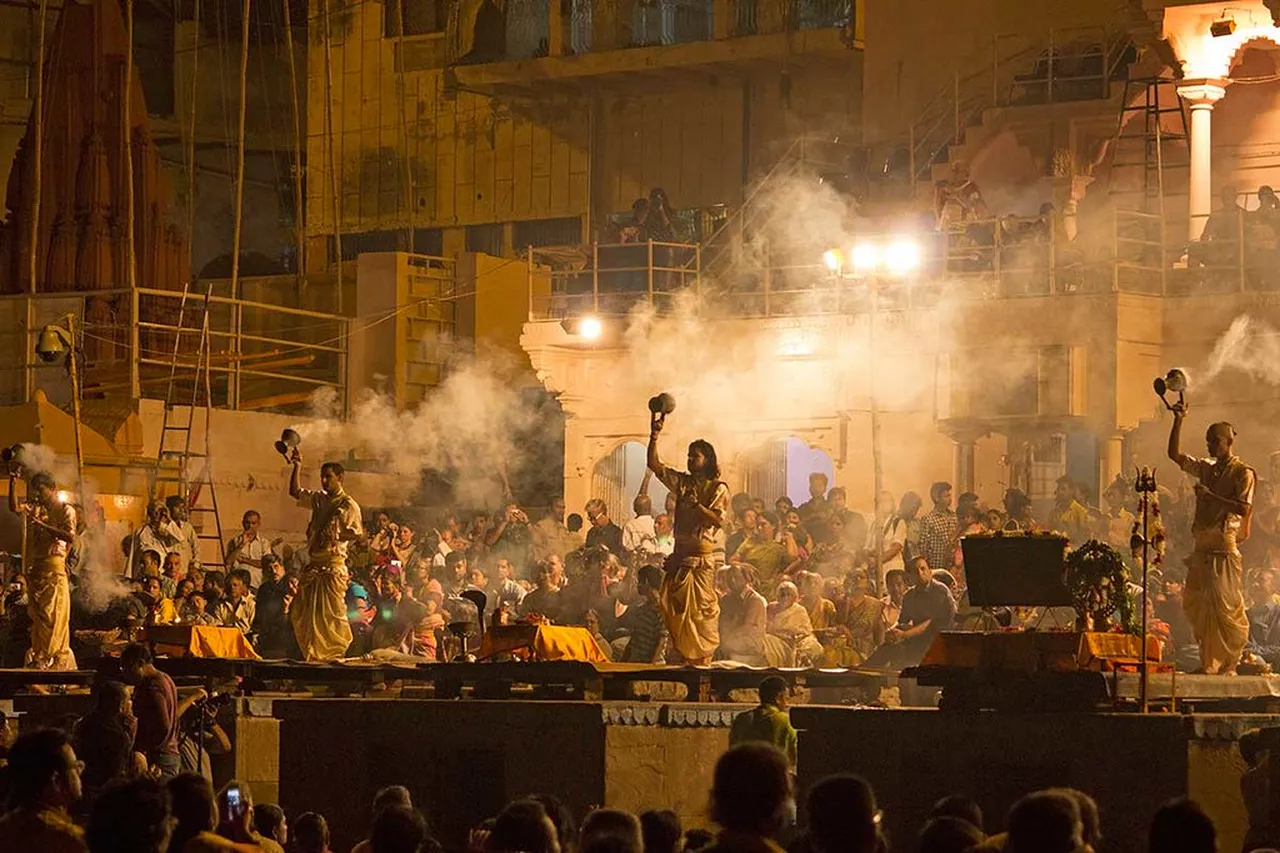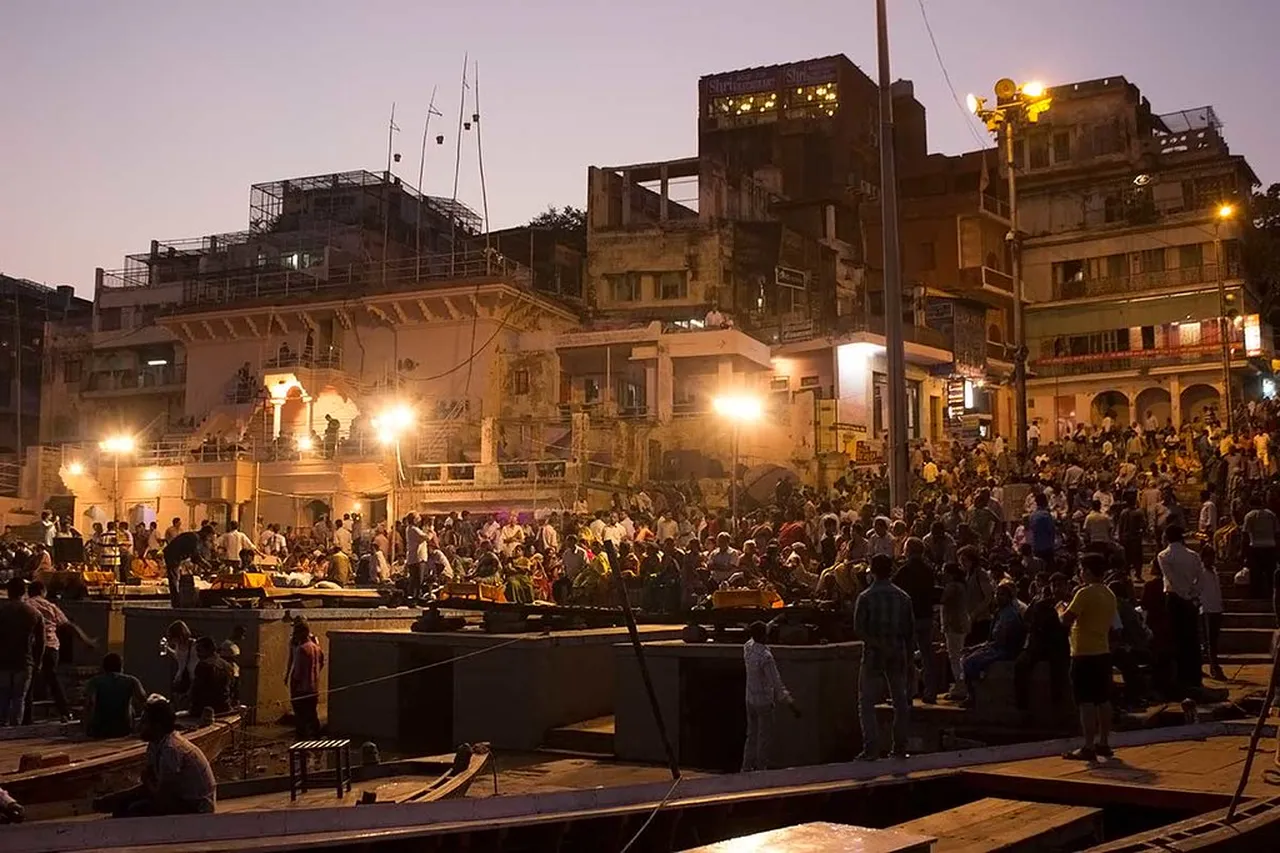
Varanasi Culture: 12 Rich Experiences to Embrace
Table of Contents
Varanasi Culture
Varanasi culture is steeped in spirituality and tradition, making it one of the most captivating cities in India. Known as the spiritual heart of the country, Varanasi offers travelers a unique glimpse into ancient rituals, local art, and vibrant festivals that have thrived for centuries. In this article, we’ll explore 12 immersive experiences that showcase the essence of Varanasi culture, from sacred ceremonies along the Ganges to traditional music performances. Prepare to dive deep into the heart of this enchanting city, where every corner tells a story and every experience is a journey into the past.
Want to find the best travel deals for this destination? unlock adventure planner with our adventure planning specialist!
1. Witnessing the Ganga Aarti: A Spiritual Ceremony at the River

One of the most profound Experiences in Varanasi culture is witnessing the Ganga Aarti. This spiritual ceremony, held every evening, takes place at the banks of the Ganges River. As the sun sets, a breathtaking ritual unfolds, lighting up the skies with the flickering flames of diyas (oil lamps). Visitors gather to witness both the beauty and the spiritual fervor.
During the ritual, priests perform a synchronized chant, offering prayers to the Ganges. The atmosphere is filled with spiritual energy, making it a must-see for anyone exploring the city. Additionally, if you arrive early, you can find a good spot to enjoy this mesmerizing show in serenity.
2. Exploring the Ancient Ghats: The Heart of Varanasi Culture

The ancient ghats of Varanasi are the beating heart of its culture. These steps leading down to the Ganges hold significant historical and spiritual importance. As you stroll along the river, you’ll encounter locals performing various rituals, taking dips, and engaging in everyday Activities.
Each ghat has its unique story and significance. For example, Dashashwamedh Ghat is renowned for the Ganga Aarti, while Manikarnika Ghat is known for its cremation rituals. Exploring these ghats provides a deeper understanding of the local lifestyle, allowing you to truly appreciate the rich tapestry of Varanasi culture.
3. Experiencing Traditional Banarasi Music: The Sound of Heritage

Traditional Banarasi music is another vital aspect of Varanasi culture. This city’s deep-rooted musical heritage is seen in its classical performances, folk songs, and devotional music. Among the many styles, Banaras Gharana stands out with its unique vocal techniques and emotive renditions.
Attending a live performance gives you insights into the city’s artistic expressions. You will notice how music is intertwined with spirituality here. If you’re lucky, you might even meet local musicians who share their stories and passion for their craft. This enriching experience truly resonates with the essence of Varanasi culture.
4. Participating in a Varanasi Cooking Class: Culinary Traditions

Participating in a Varanasi cooking class offers a delightful opportunity to connect with the local culture through its remarkable cuisine. The class usually begins with a visit to a bustling market where you can experience firsthand the vibrant ingredients that define the region’s dishes. This immersive experience not only enhances your culinary skills but also allows you to appreciate the significance of food in Varanasi culture.
With guidance from seasoned chefs, you’ll learn to prepare beloved local dishes like chaats and kheer. More importantly, you’ll discover the stories behind these recipes, which resonate with tradition and community. As you cook, you’ll engage in lively conversations, understanding how spice blends and cooking techniques have been passed down through generations.
5. The Ritual of Funeral Pyres: Understanding Life and Death

The ritual of funeral pyres in Varanasi is perhaps one of the most profound aspects of its culture. Situated by the Ganges, the Manikarnika Ghat is known as the primary cremation site and is an essential component of Varanasi culture. Here, the ancient traditions surrounding death intersect with the beliefs of rebirth and liberation.
Witnessing this ceremony can be both enlightening and emotional. Traditionally, families gather to say their final farewell, while priests perform specific rites. Each step in this ritual signifies respect for the departed and a connection to the divine. Visitors are advised to approach this experience with sensitivity, as it touches upon profound themes of mortality and spirituality. Remember, witnessing such rituals fosters a deeper understanding of life and death in Varanasi culture.
6. Learning about Banarasi Sarees: Weaving Threads of Culture
Banarasi sarees are not just garments; they embody the rich heritage and craftsmanship inherent to Varanasi culture. Famous for their luxurious fabric and intricate designs, these sarees tell stories woven into their very threads. In Varanasi, you can delve into the art of saree making by visiting local weavers who practice this age-old craft.
Learning about the process offers an appreciation for the skill and dedication involved. You may even get a chance to try your hand at weaving, allowing you to feel the fabric’s texture and see patterns come alive. Additionally, understanding the symbolism behind the designs and colors can deepen your connection to the local culture. Thus, exploring Banarasi sarees becomes a journey through tradition, artistry, and emotion.
7. Discovering Varanasi’s Temples: Architectural Marvels and Beliefs
Recommendation: Don't miss out on amazing Varanasi tours - book now!
The temples of Varanasi are not just places of worship; they are architectural marvels that embody the rich cultural heritage of the city. Each temple, from the iconic Kashi Vishwanath Temple to the serene Sankat Mochan Hanuman Temple, narrates stories of devotion and artistry.
As you stroll through the narrow lanes, you’ll discover intricate sculptures and vibrant murals that reflect Hindu mythology. Furthermore, witnessing the rituals performed in these temples offers a glimpse into spiritual practices that have remained unchanged for centuries. In addition, many temples hold festivals that attract thousands of devotees, enhancing the sense of community.
Pro tip: Don’t forget to visit the Durga Temple known for its stunning architecture and tranquility.
8. Engaging with Local Artisans: Craftsmanship in Varanasi Culture
Varanasi is renowned for its dedication to traditional crafts, particularly the Banarasi sarees. Engaging with local artisans allows visitors to experience the meticulous work that goes into creating these exquisite garments. These artisans pour their heart and soul into every piece, using ancient techniques passed down through generations.
Notably, a visit to a local weaving workshop can be enlightening. Here, you can observe the intricate process of weaving, from dyeing the thread to final finishing. In addition to sarees, local artisans also specialize in pottery, metalwork, and wooden crafts. Supporting these craftsmen not only enriches your travel experience but also contributes to the preservation of Varanasi’s artistic legacy.
9. Joining the Festivities of Dev Deepawali: Lights of Celebration
Recommendation: Don't miss out on amazing Varanasi tours - book now!
One of the most significant Events in Varanasi’s cultural calendar is Dev Deepawali, celebrated with fervor and joy. This festival, occurring fifteen days after Diwali, is dedicated to the worship of Lord Shiva. During this time, the ghats along the Ganges are illuminated with thousands of diyas (oil lamps), creating a breathtaking spectacle.
Moreover, joining in the celebrations allows you to experience the vibrant local traditions, which include music, dance, and community prayers. As the sun sets, the river sparkles with the glow of lamps, and the air fills with the scent of flowers and incense. Transitioning from the chaotic streets to this serene atmosphere can be a truly magical experience, revealing the spiritual depth of Varanasi culture.
10. Exploring Heritage Walks: Stories of Old Varanasi
Recommendation: Don't miss out on amazing Varanasi tours - book now!
Exploring the heritage walks of Varanasi is an enlightening experience that delves into the city’s rich history and vibrant culture. These guided tours navigate through narrow alleys, ancient temples, and bustling markets, providing a glimpse into the daily lives of locals. As you stroll through the city’s streets, you’ll encounter fascinating stories of old that echo centuries of tradition.
Moreover, engaging with local guides enhances your understanding of Varanasi’s past, especially its important religious significance. For instance, while walking by the Ganges, you may learn about the various customs associated with the river. Since these walks often include hidden gems, it’s common to stumble upon exquisite hand-crafted artifacts and art, showcasing Varanasi’s commitment to craftsmanship.
11. Experiencing the Festival of Holi: Colorful Celebrations in Varanasi
The Festival of Holi is one of the most vibrant celebrations in Varanasi, where the streets come alive with color and joy. During this festival, people play with powdered colors and water, creating a stunning kaleidoscope that reflects the essence of Varanasi culture. Participating in these festivities allows you to connect with locals, forging friendships while embracing the spirit of the occasion.
Additionally, you’ll find that residents prepare special sweets and drinks to share. Therefore, indulging in these delightful treats is a must. Furthermore, the atmosphere is filled with music and laughter, enhancing the festive mood. Overall, experiencing Holi in Varanasi is not just about colors; it’s a celebration of love, unity, and the triumph of good over evil.
12. Visiting Sarnath: The Spiritual Legacy of Buddha
Sarnath, located just a short distance from Varanasi, is a crucial site for understanding Buddhism. It is here that Buddha delivered his first sermon after attaining enlightenment. The tranquil atmosphere of Sarnath, combined with its archaeological sites, offers a glimpse into its spiritual legacy. As you wander through the grounds, you’ll encounter remnants of ancient stupas and monasteries, which are profound markers of Buddhist history.
Moreover, the Dhamek Stupa, standing tall at Sarnath, is a symbol of the teachings Buddha imparted to his first disciples. Visiting the museum nearby is highly recommended, as it houses relics and sculptures that enrich the understanding of Buddhist culture. In conclusion, a visit to Sarnath is not just a trip; it’s a pilgrimage into the legacy of peace and enlightenment that shapes much of Varanasi’s cultural identity.
Embracing Varanasi culture through these diverse experiences offers a profound connection to the city’s soul, reflecting its rich traditions, spirituality, and artistic heritage. From the mesmerizing Ganga Aarti to the vibrant celebrations of Holi, Varanasi showcases a tapestry of life that captivates every visitor. What aspect of Varanasi culture are you most eager to explore? Share your experiences and thoughts in the comments below, and let’s connect through our shared appreciation of this incredible city.